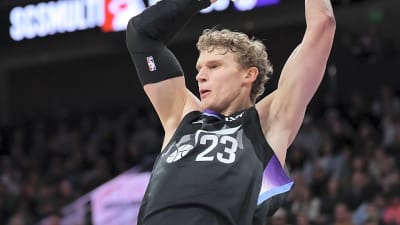Before people flocked to towns like Steamboat Springs, Jackson Hole, Crested Butte, and Telluride for their world-class skiing, these towns had their own rich histories as ranching and mining towns.
Although things like the Million Dollar Cowboy Bar have become more of a novelty than a real saloon, and cowboy hats are more of a tourist fashion statement than anything else, these towns still have a few pieces of genuine western culture if you know where to look.
By 'genuine western culture,' I mean one of the coolest sports I've ever seen. If skiing had it's own NASCAR, where it's best enjoyed from a muddy venue with a beer in your hand, it would be skijoring.
Last winter, a few of my friends were sick of getting skunked on big lines in the backcountry so they pivoted and decided to try skijoring. It turns out professional skiers with a ski racing background are set up to be really good at skijoring, much to the dismay of some of the cowboys they're competing against.
If my 'NASCAR' description alone hadn't convinced you to look up the nearest skijoring race already, maybe learning a bit more about the sport will. So what on earth is skijoring?
What is Skijoring?
At the most basic level, skijoring is the act of being pulled behind an animal or vehicle on skis. As we know it in western ski towns, Skijoring is essentially a sport that combines rodeo and skiing racing.
Experienced cowboys/girls pull a skier behind them from a rope attached to the horse's saddle. Typically, the skier is pulled through a course reminiscent of skier cross that often has banked turns and jumps. Tracks can be straight or curved. Straight courses are 700-900 feet in length from start gate to finish gate.
The tracks can have breakaway style gates for skiers to turn around, and hanging rings they must collect along the way.
Skiers can compete up to four times per race, but must ski behind a different horse for each race. To have a successful run in a skijoring competition, skiers must ski the track as fast possible while pulled by the horse, complete all the obstacles, finish with both ski boots across the finish line, be on at least one ski, still be holding the rope, and have no more than two points of their body be touching the ground. Oddly specific rules no doubt, but skijoring is an odd sport, after all.
There are five second time penalties for missing jumps or gates, and two second penalties for missed or dropped rings. At the end of the day, the fastest skier/horse team wins.
If it sounds full on as heck— you best bet it is. Skijoring can be an all out carnage fest, but it's also super, super impressive to watch a dialed team do well.
Where Does Skijoring Originate?
Skijoring originated in Persia, where the first reports of people being pulled on skis by dogs were recorded thousands of years ago.
Skijoring behind horses became popular in the early 1900's in Switzerland and France before making it's way to North America. Equine skijoring became popular in the 1930's in western mountain towns with existing cowboy culture like Jackson Hole, Wyoming and Steamboat Springs, Colorado where folks would often race down streets in pairs.
Where Can I Watch Skijoring?
There are now skijoring races all over the US and Canada, although they take place mostly in the Western US.
Leadville and Steamboat Springs, Colorado are home to two of the oldest skijor races in the country with races since 1949 and 1913, respectively.
Steamboat's annual Winter Carnival also celebrates the town's cowboy roots with a Cowboy Downhill Race. Other notable races are held in places like Big Sky, Montana; Silverton, Colorado; Driggs, Idaho; Pinedale and Jackson, Wyoming.
Who Can Compete in Skijoring?
In most races, there are Open/Pro, Sport, Novice, Youth, Century, Snowboard, Women’s and Switcheroo categories to choose from, and all competitors ski the same track. Which is to say, pretty much anyone can enter as a skier, but it's not a sport for the faint of heart.
Although skijoring is a bit different that ripping down a black diamond ski run at your local mountain, skiers still have to make fast turns, keep their speed, and stay in control on jumps, all while holding onto a rope. Rumor has it you might even see skiers like Jim Ryan, Veronica Paulsen, and Madison Rose Ostergren on the skijor circuit.
It was cool to see ski and cowboy culture come together at the skijoring events I've been to. I watched great on-mountain skiers, that I personally know, suited up in pearl-snaps showing that they knew how to ride a horse, and ski behind one, just as well.
What Does Skijoring Look Like?
Check out Jim Ryan and Madison Rose Ostergren compete in skijoring in the video below. Tap or click to play. Skip ahead to the 3:00 mark to get right to skijoring action.
Next time you're in a high pressure system and don't feel like skiing, or the backcountry's scaring you away, maybe find a skijor event to go watch—or better yet, find a horse.
More must-reads:
- NFL Draft intel: Big Ten QB's elite arm turning heads among scouts
- Hero RB explained: Top fantasy football targets for 2025
- The 'MLB franchise home run leaders' quiz
Breaking News
Trending News
Customize Your Newsletter
 +
+
Get the latest news and rumors, customized to your favorite sports and teams. Emailed daily. Always free!








